Why are Fewer Families Searching for Private and Independent Schools?
After years of surging demand, online search volume for “independent schools” and “private schools” is cooling. Families who once actively researched alternatives to public education are slowing down their digital inquiries. For schools, this means fewer new leads coming in through the typical online channels. The good news is that while the pool of prospects may be smaller, engagement metrics indicate that the prospective families in the pipeline are highly engaged on school’s websites.
However, this isn’t a temporary dip. Across multiple regions, data shows a structural shift in enrollment behavior — and schools need to respond strategically.
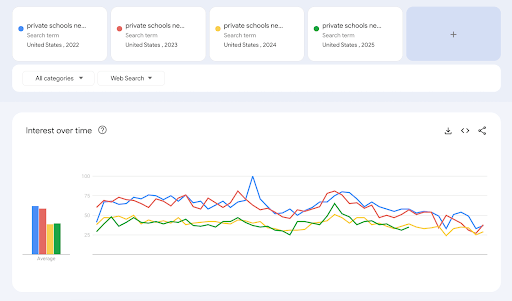
Why Are Fewer Families Searching for Private Schools in 2025?
Declining Demographics
We’ve all known the enrollment cliff was coming: birth rates have been declining for over a decade, and the number of school-age children is shrinking nationwide. In many markets, that means fewer families are even entering the consideration funnel for private or independent schools.
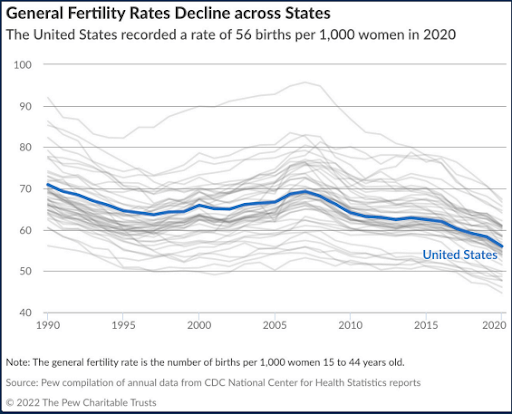
Financial Pressure on Families
Rising inflation, increased living costs, and ongoing economic uncertainty make tuition a bigger hurdle. Families are weighing value more carefully, and private school enrollment is an even further stretch for many middle-income households.
Political and Cultural Polarization in the US
Education has become a divisive topic in the United States. Some families are pausing decisions to avoid perceived ideological battles, both in public and private settings. This uncertainty is slowing traditional inquiry cycles.
International Schools: Fewer Expat Families on the Move
International schools are seeing fewer expat families relocating since COVID. Companies are sending fewer employees abroad due to rising costs, and when they do, it’s less common for families with children to make the move. Many employers have also reduced or removed education benefits from expat packages, making international school enrollment less frequent among these families.
Heightened Expectations for Value
Parents are asking harder questions about outcomes: academic performance, social-emotional growth, college placement, and overall return on investment. The “Private = better” assumptions are no longer the standard.
Shifting Parent Expectations
We’re firmly in the millennial parent era and at the front edge of the Gen Z parent era, and with this shift comes a major change in buying behavior. These generations value personalization, convenience, transparency, and social responsibility. They expect experiences—educational or otherwise—to feel tailored to their needs and aligned with their values.
At the same time, they’re navigating new financial realities: record levels of student debt, a high cost of living, and steep housing prices. For many, affordability takes precedence in the decision-making process, and private schools can feel out of reach—or worse, out of touch. If a school’s brand signals exclusivity rather than accessibility or individuality, these parents may not even take the first step to research it. The result? A perfect storm for declining search volume and a softer private school market overall.
What’s Next for Private School Enrollment and Search Trends?
School Choice Programs Are Expanding: Voucher and scholarship programs could make private education more accessible in some states, such as Florida, Arizona, and soon Texas. Schools in these regions may see demand stabilize or even increase.
Public School Uncertainty: Ongoing teacher shortages, budget pressures, and uncertainty around the future of the Department of Education may prompt some families to consider independent schools as a more reliable alternative.
An Opportunity to Reposition: The softening market forces schools to clarify and communicate their value. Schools that tell a clear, compelling story about their mission and outcomes will stand out, even in a more competitive environment.
How Private Schools Can Adapt to Changing Search Trends
- Clarify Your Narrative: Ensure your messaging communicates why your school exists, who you serve, and how you help your students thrive. Get clear about your value proposition and key differentiators: these are the benefits of your school that are uniquely yours. Put your flag in the sand for what you stand for.
- Action Steps:
- Audit Your Messaging: Review your website, ads, and collateral to ensure your mission, values, and differentiators come through consistently and clearly.
- Refine Your Value Statement: In one or two sentences, articulate what makes your school distinct and why families should choose you over another good option.
- Show, Don’t Just Tell: Use stories, testimonials, and visuals that demonstrate your values in action—how students learn, grow, and lead differently because of your approach.
- Action Steps:
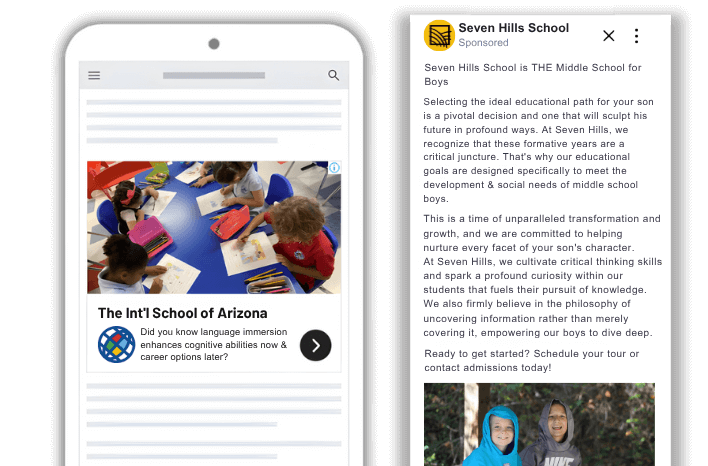
- Ensure a Multi-Channel Strategy: Social media has become its own search engine, especially among younger parents. Platforms like TikTok and Instagram are now Gen Z’s preferred places to search, research, and make decisions. They’re more likely to connect with strategic storytelling via short-form video than with a website full of traditional edu-speak. Having a multi-channel digital strategy that includes social advertising ensures your school stays visible where today’s parents are actually spending their time, engaging with content, and forming opinions.
- Action Steps: Create organic accounts on Facebook, Instagram, and TikTok, if you haven’t already. Incorporate student-generated content onto these platforms to showcase authentic experiences and amplify your student voices. This is especially helpful if your Mar/Com team’s plates are already full!
- Action Steps: Create organic accounts on Facebook, Instagram, and TikTok, if you haven’t already. Incorporate student-generated content onto these platforms to showcase authentic experiences and amplify your student voices. This is especially helpful if your Mar/Com team’s plates are already full!
- Use Data to Focus Marketing: Leverage enrollment analytics, website behavior, and search trends to understand which families are most likely to engage. Data-driven insights help you allocate marketing resources more effectively, target the right audiences, and tailor messaging to the channels and content formats that resonate most—reducing wasted spend and improving recruitment outcomes.
- Action Steps:
- Explore free tools like Clarity (a website heat-mapping tool) to gain insight into how families are engaging with critical pages on your website.
- Interview current, best-fit families to assess what works in your current marketing plan, and where there may be soft spots.
- Audit your social media and email comms to identify what messaging themes resonate with your audience and focus your efforts accordingly. This helps you prioritize which stories to tell.
- Action Steps:
- Engage Year-Round: EMA’s latest “The Ride to Independent Schools” report indicates parents are spending upwards of two to five years researching and considering private schools before enrolling. It is more critical now than ever that schools not only have a year-round digital marketing presence, they also need to nurture prospects through consistent storytelling, virtual events, and personalized follow-ups via email workflows. Given that parents’ motivations for searching for a school range from social and emotional reasons to academic challenge or lack thereof, a parent could begin a school search at any given moment. You need to make their consideration list, whether it’s in September, March, or July.
- Schools Should Highlight What Matters Most to Families:
- U.S. schools should highlight outcomes over features. Independent schools need to move beyond promoting small class sizes, strong test scores, and school placement lists. Instead, emphasize what families truly value: confidence, curiosity, leadership, and belonging. Schools too often focus on features of their school (i.e., small class sizes, faculty with advanced degrees, breadth of opportunity, etc.) when what you should be messaging on is the benefits of attending your school:
- How do those features impact the students attending your school?
- How does it show up in the day-to-day experience of their education?
- How are they better prepared for launching into the real world?
- International schools should highlight global readiness and community. Families choose international schools not just for academics, but for the promise of a truly global education. What connects and drives international school enrollment is the opportunity for students to develop cross-cultural understanding, adaptability, and a sense of belonging in a diverse community. Parents value how these schools prepare their children to thrive anywhere in the world—building resilience, open-mindedness, and the confidence to navigate new environments.
- U.S. schools should highlight outcomes over features. Independent schools need to move beyond promoting small class sizes, strong test scores, and school placement lists. Instead, emphasize what families truly value: confidence, curiosity, leadership, and belonging. Schools too often focus on features of their school (i.e., small class sizes, faculty with advanced degrees, breadth of opportunity, etc.) when what you should be messaging on is the benefits of attending your school:
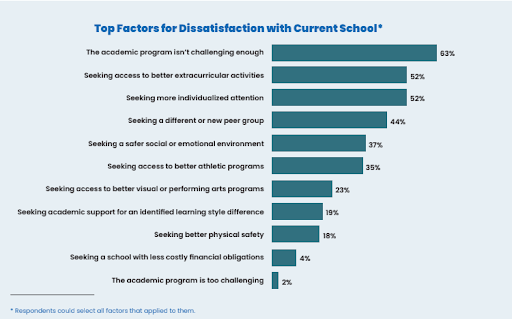

- Ensure Your School Is Optimized for Generative Search: With AI-powered tools and chatbots increasingly driving parent research, schools need to make sure their content is structured for generative search. This means clear, concise answers to common questions, accessible content, and signals that AI can pull from—like FAQs, program highlights, and local information. Optimizing for generative search ensures your school appears in AI-driven recommendations, voice searches, and other emerging “answer-first” experiences, not just traditional search results.
The independent school market may be softening, but that doesn’t mean opportunity is disappearing. Schools that respond with clarity, strategy, and targeted engagement will emerge stronger—even in a more cautious market.
With fewer families are searching, every search counts.
See How We Help Schools Stand Out
FAQs
Why is private school enrollment declining in 2024 and 2025?
Enrollment is softening due to demographic shifts (fewer school-age children), economic pressures (inflation, affordability), and increased competition from charter schools, homeschooling, and online learning. Some regions see growth from school choice programs, but overall, the market is more competitive and families are weighing value more carefully.
What are the best marketing strategies for private schools facing declining interest?
Focus on authentic storytelling, performance-based digital advertising (like AI-powered campaigns and retargeting), parent and student advocacy (testimonials), and purpose-driven branding. Highlight your school’s values, outcomes, and community engagement to stand out.
How can private schools increase student enrollment through digital marketing?
Leverage social media (Facebook, Instagram, LinkedIn) to showcase culture and achievements, use personalized email campaigns to nurture leads, and invest in high-quality video content to build emotional connections. Data-driven targeting and retargeting can maximize ROI.
What role does social media play in private school marketing today?
Social media is essential for community building, real-time engagement (live Q&As, virtual tours), and targeted advertising. It helps schools reach and connect with prospective families where they spend their time online, building trust and visibility.
How can private schools use SEO to attract more prospective families?
Optimize your website with relevant keywords (like “private school admissions” and “best private schools near me”), create valuable blog content, and focus on local SEO to appear in searches from nearby families. Consistent, high-quality content and technical SEO improvements boost organic traffic.
What factors influence parents’ decisions to choose a private school in 2025?
In the U.S., parents prioritize academic excellence, holistic development (social-emotional learning, mental health), alignment with family values, technological integration, and a welcoming, inclusive community. Schools that clearly communicate these strengths are more likely to attract and retain families.
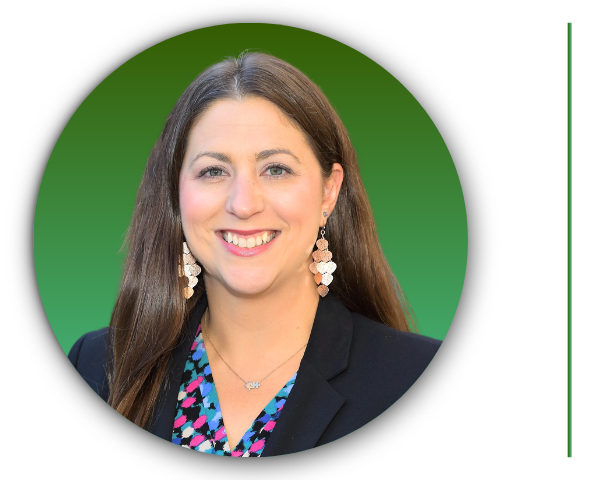
Heather Burchfield is Truth Tree’s Director of Partner Success focusing her infectious energy on the success of school partners worldwide. Heather hails from a background in journalism before devoting 15 years to independent school admissions and marketing.
